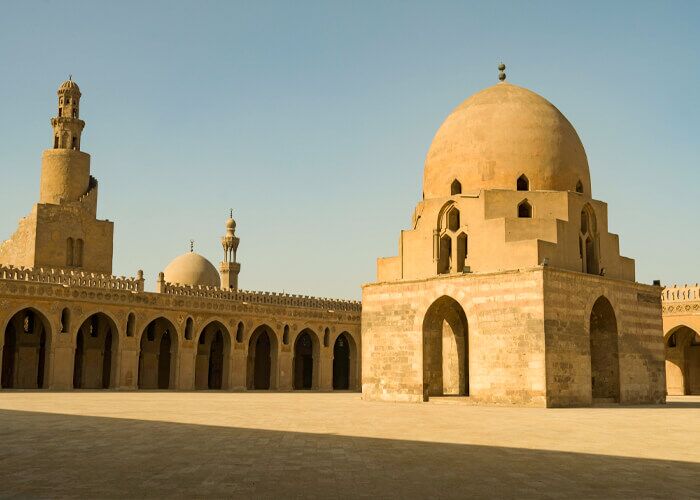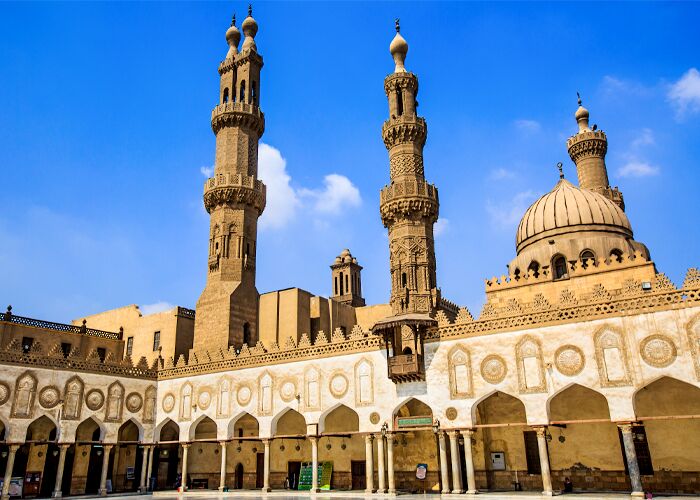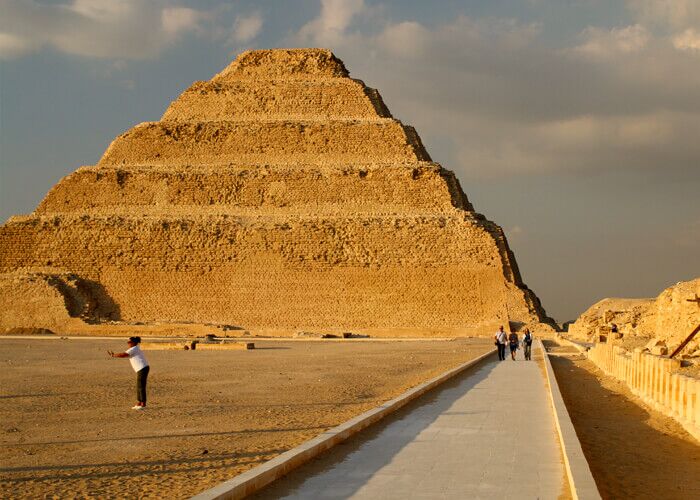The Ibn Tulun Mosque
Ibn Tulun Mosque: In Cairo, also known as “the City of a Thousand Minarets,” you can find many pharaonic, Coptic, and Islamic sites. The mosques in Cairo are very important because they show Islamic art and architecture and sometimes also have Roman, Coptic, Greek, and Ancient Egyptian influences.
The Mosque of Ibn Tulun is one of the mosques that is very important in terms of architecture. This mosque is the oldest in Cairo. The Mosque of Amr Ibn Alas was the first mosque, but it no longer looks like it did when it was first built. The Mosque still looks like it did when it was first built.
How Ibn Tulun Mosque Came to Be
Ahmed Ibn Tulun was a Turkish slave who started his Tulunid dynasty after he got free. After building his new capital city, Al-Qatai, he started building his Mosque. In the 9th century, between 876 and 879, the Mosque was built. Several times, the Mosque was fixed up. In 1177, the Fatimid “Badr El-Din Al-Jamali” ordered the first restoration.
In the 12th century, pilgrims used the Mosque as a place to stay, which caused some damage. The famous minaret was added to the Mosque by Governor Lachin in 1296. It was fixed up in 1999, when the courtyard was paved and a black marble fountain was put in.
How the Mosque of Ibn Tulun Was Built
It is one of the largest mosques in Cairo, and it is the only one left in Al-Qatai, the capital. It was made to the west of Saladin’s Citadel. It’s 140 x 116 m and has a 90 m square courtyard in the middle. Around the courtyard are arcades that lead to the prayer room. In the middle is a marble fountain where people can wash their hands.
Lajin fixed the dome on top of the fountain in 1296. (the original dome fell in 968). There are five aisles in the prayer room that run parallel to the Qibla (the direction that Muslims should face during prayer). The columns are joined together, and the wooden ceiling is flat. There are white plaster decorations all over the Mosque. The spiral staircase minaret is so well-known because it has a very unique design.
About the Ibn Tulun Mosque
On Mount Yashkur, the Mosque was built. There are many stories about where the Mosque is located. Some say it was where Noah put the ark or where Moses saw Pharaoh’s magicians. Others say it is near where Abraham killed Isaac. The design of the minaret is based on the one in Samarra, Iraq (outer spiral staircase). Some of the Mosque’s houses were found outside, but most of them were destroyed in 1928.
A tour of the Ibn Tulun Mosque
The Ibn Tulun Mosque is the third largest mosque in the world and the only one still standing in Egypt. If you want to visit the mosque, you can check out our travel packages to Egypt, where you can also visit Cairo, Alexandria, and take a cruise on the Nile between Luxor and Aswan.





